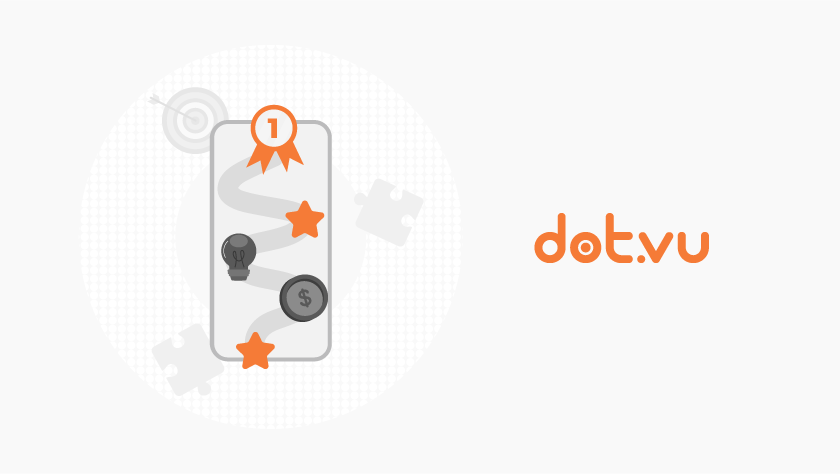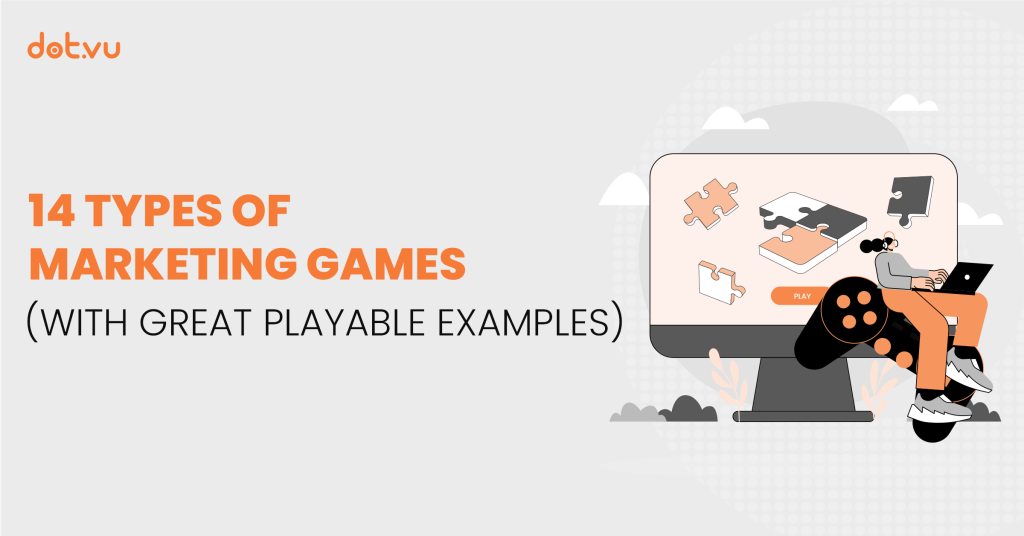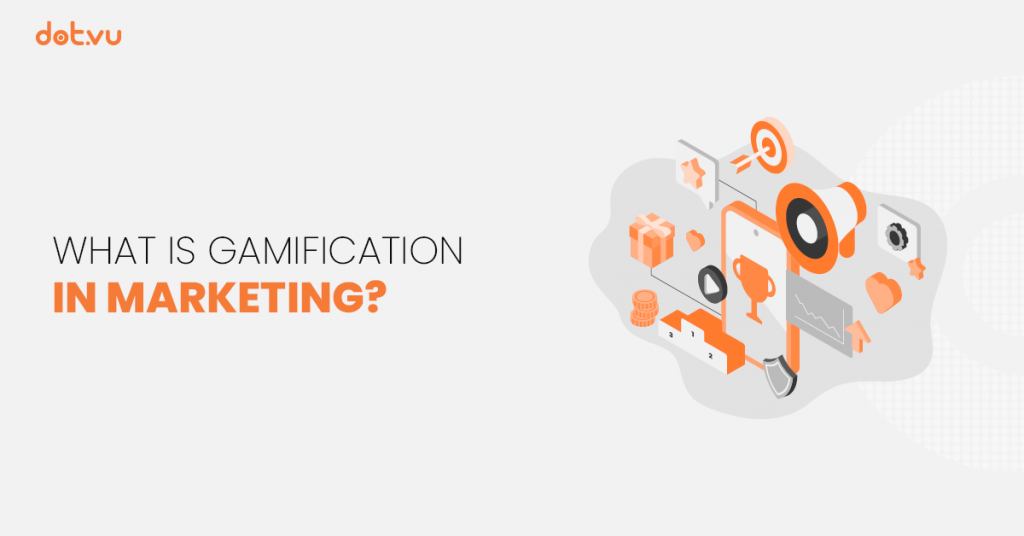
Gamification, games for marketing, Marketing Games – these terms have gained immense popularity among businesses today. The reason is simple: implementing game elements for business purposes is a proven way to increase engagement, boost sales, and enhance brand loyalty.
Some marketers might be skeptical about combining games and advertising. However, gamification is an effective strategy to set a website apart from the competition. Consider this – most websites look the same. A simple tool like a fun instant reward game can change everything.
Whether you are still discovering the power of gamification or already searching for gamification software, this blog post will prepare you for success.
In this blog post, we go over the following:
- What is gamification in marketing?
- Why is marketing gamification so effective?
- What are the benefits of gamification in marketing?
- Tips on how to implement gamification in marketing
What is gamification in marketing?
What is gamification in marketing, and why is it so popular?
| Gamification marketing is a strategic approach where businesses use game-based elements to increase engagement on their marketing communication channels. |
Imagine this scenario: an online shopper is browsing your website, exploring different products. Suddenly, they come across a Spin & Win game, inviting them to try their luck for a chance to win a 20% discount code! Who could resist the thrill of a fun game combined with the opportunity to save money?
Companies use Marketing Games on their websites to engage visitors and improve user experience. Transforming old concepts into interactive online experiences has never been easier.
Marketing gamification has gained a lot of traction in business. In fact, organizations that utilize gamification in marketing and gamified elements in the workplace are 7 times more profitable than those that don’t. For example, Extraco Bank increased customer acquisition by an astonishing 700%!
Some of the world’s biggest and best-known brands, such as McDonald’s, Toyota, Coca-Cola, Spotify, and Disney, deploy gamification for marketing strategies. Yet, this doesn’t mean gamification is exclusive to larger companies.
Today, developing and launching Marketing Games can be quick and easy, and they are available at a fraction of the cost they used to be. Most companies can now implement games in their marketing mixes and have enormous success, such as 2x conversion rates! Games are especially profitable for marketing campaigns, given that mobile devices contribute $92.2 billion in revenue, accounting for half of the market’s total earnings.
Let’s take a closer look at the history of gamification. The technique of rewarding customers can be traced back to 1912. The image below outlines the most important dates you need to know.
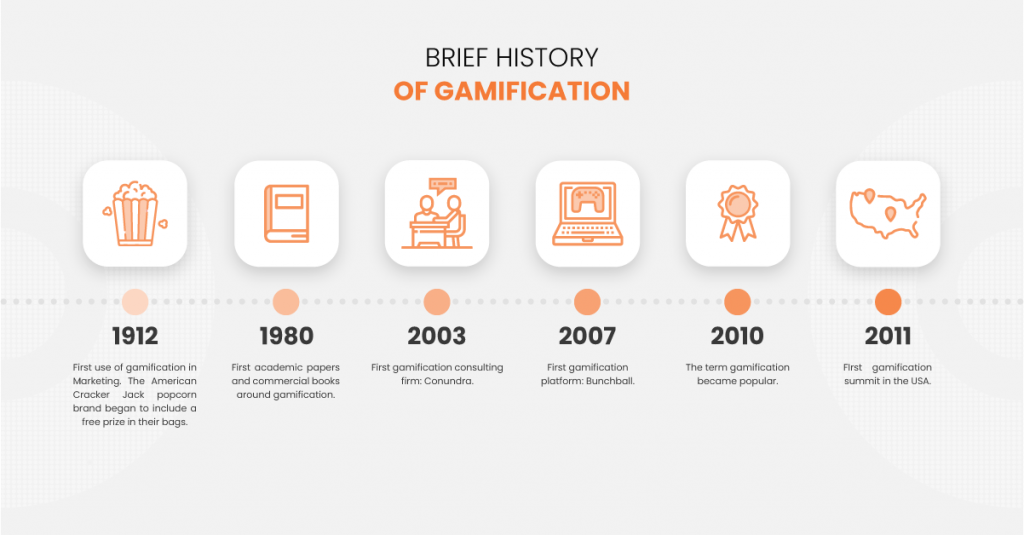
Why is marketing gamification so effective?
As people, we like to be entertained. We want to have fun. We love to play. This should come as no surprise, as it is deeply ingrained in our culture and has been expressed for centuries. When we play games, our bodies release hormones that make us feel better. Marketers leverage this to attract, engage, and retain their audiences. One of the most effective and popular ways to achieve this today is through gamified experiences, or marketing gamification, as it is more commonly called.
Customers enjoy playing games for many reasons. Most people like to be in the driver’s seat, and when playing a game, they can influence their own experience. If we compare playing a game to passively reading a whitepaper or blog post, it sounds a bit more fun, doesn’t it?
Before the widespread use of the term, which became popular around 2010, many different fields of work had already applied this technique, where game-design elements would be adapted into non-game contexts – drawing heavy inspiration from video games.
In today’s context, many companies across industries use gamification in marketing. The reasons for this include enhancing user engagement, improving learning and comprehension, increasing motivation and productivity, steering better user flows, and many more.
Gamification for marketing is effective because it leverages people’s natural inclination for socializing, learning, and self-improvement. Marketing gamification gives people a sense of achievement through diverse types of reward systems.

What are the benefits of gamification in marketing?
Here are some of the main benefits and reasons why you might want to implement gamification into your own marketing:
1. Supercharge customer engagement
Games are proven methods to increase customer engagement rates. Moreover, they are excellent for increasing the time spent on websites (and improving those SEO stats!) because the chance of winning a prize keeps people motivated to play further. Not to mention, this creates a memorable experience for the user, who may feel eager to share the results with others on social media.
2. Differentiate and strengthen your brand
Games are a great marketing tool because they are fun to play and often not perceived as intrusive marketing. They create a positive image of your company and influence consumers’ buying decisions in the future. Marketing gamification increases social shareability too.
3. Increase conversion rates
As your audience engages playing the game, your CTA button at the end is more likely to work. Rewarding participation with discount codes and limited offers will incentivize sales. As a result, you will increase conversion rates.
4. Educate about products/services
Gamification for marketing entertains your customers while educating them about products or services. Some Marketing Games, such as quizzes or puzzles, have educational purposes.
5. Generate new leads in a non-intrusive way
Marketing has transitioned from product-centric to more consumer-centric in the past years. Games are permission-based, where the customers choose to opt-in and give up their contact details to play or claim their prizes. Customers also value more personalized marketing efforts, which the Interactive Experience brings.
Gamification marketing also helps you collect valuable customer data. Embedding Marketing Games is a great tool to understand consumer behavior, as they allow marketers to monitor analytics.

Gamification marketing examples
Now, it is time to dice into some engaging gamification marketing examples. You can easily build any of them, using a fully customizable template on Dot.vu!
Luck Games
Incorporate an element of chance into your marketing strategy. Luck games offer visitors the thrill of uncertain outcomes, and the rewards can range from exclusive discount codes to free delivery. This instant-win scratch game invites users to scratch cards virtually for delightful surprises – an excellent way to elevate your sales through the magic of gamification.

Skill Games
Engage your audience by challenging their skills. Imagine creating captivating online puzzles or interactive games where players can earn valuable rewards like discount codes. These skill-based games not only entertain but also reward users for showcasing their abilities.
Furthermore, use your product images within skill games to leave a lasting imprint of your brand in customers’ minds. By incorporating visuals of your products seamlessly into interactive challenges, you enhance brand recall and create a more memorable user experience.
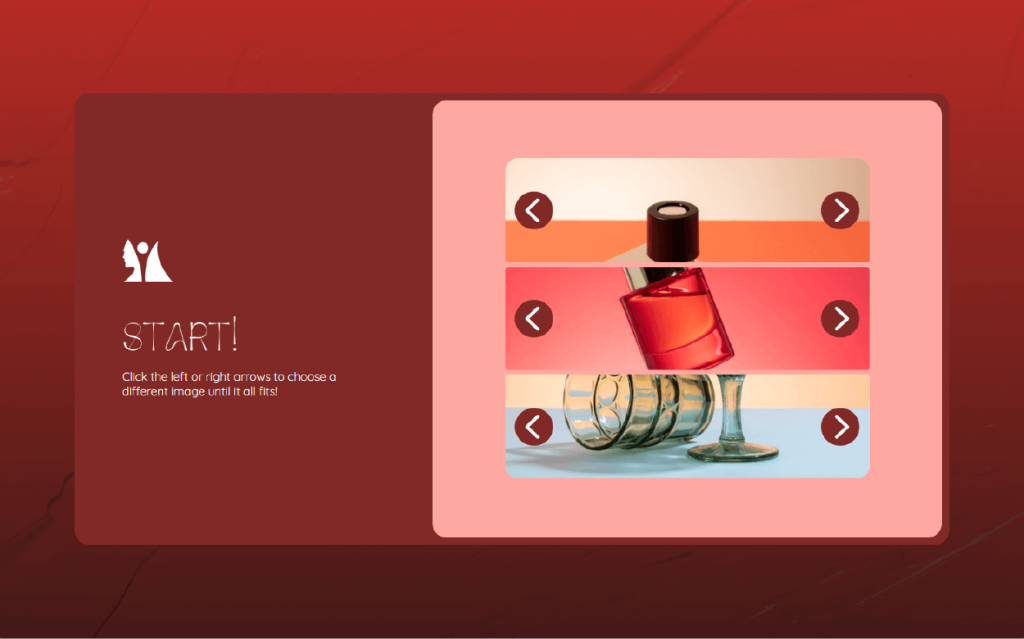
Knowledge Games
Take your audience interaction to new heights with knowledge games. Test their wits with memory challenges, quiz questions, or image guessing games. By incorporating these engaging elements into your brand experience, you’re not just entertaining – you’re creating meaningful connections with your audience.

Social media contests
Encourage your audience to become active on social media. A User-generated Contest is a great gamification example if you want to boost your reach and attract more followers.

Gamified quizzes
Quizzes are fun because people can compete with each other or test their own knowledge and get rewarded. But what if you add gamification to your online quizzes, turning them into a truly memorable experience? Gamified quizzes not only enhance user engagement but also provide valuable insights into customer preferences and behavior, as most tools allow you to track participation and answers.
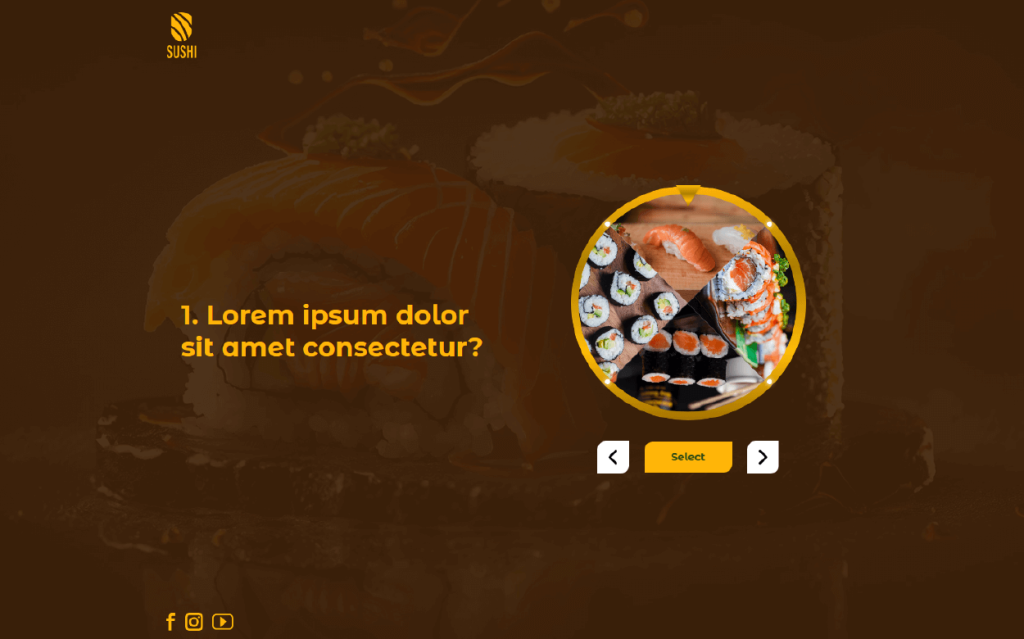
Tips on how to implement gamification in marketing
Gamify your marketing by following these steps:
Get to know your audience
Before anything else, think about your target audience and what type of games would appeal to it. The game must speak to your customers. Otherwise, you risk not reaching the objectives you set for this marketing effort. Consider factors like gender, age, location, interests, and how tech-savvy your audience group is.
Test out other Marketing Games
The best way to prepare is to try games yourself to see what’s out there. What are your competitors using? What kinds of Marketing Games have been successful? Testing out other games helps you become better equipped to see what fits your brand, objectives, and target audience. Furthermore, you can investigate different ways to repurpose content into a gamified experience. Some of your competitors might be utlilizing elements you never even imagined before!
Give your customers a reason to engage
No one is going to play your game “just because.” You need to motivate your customers to play with prizes like exclusive access to new products, coupons, discounts, tickets, points, badges, or something else. Define what you want to give to obtain your visitors’ attention.
Make results shareable
According to a survey from the University of Bologna, gamification marketing can translate to higher customer value and participation.
However, this positive relationship is linked to specific gamification mechanics being met. For example, activities that motivate customers to share content online significantly increase both amount of money spent and the frequency of purchases.
You can improve brand image with actions that require users to share content online, such as sharing obtained badges and rewards. This way, your audience is spreading the word about your brand.
Make sure your game is mobile-friendly
The usage of mobile devices has increased drastically in recent years, and when it comes to playing games, it’s no exception. According to Statista, more than 80% of the global population uses smartphones. With phones being an inseparable part of our everyday lives, generating mobile-friendly content is necessary.
Moreover, according to Business Wire, mobile devices are the best way of reaching customers.
Keep it simple
Your Marketing Game doesn’t have to be as complex as the advanced video games available today. After all, the point is to entertain while generating leads, selling your product or service, and ensuring positive interactions between your customers and your company. Thus, it is a great idea to keep your game simple. If it is too complicated and your audience can’t figure it out quickly, you may risk them moving on to another website. Most of us have moderately short attention spans. Therefore, keeping the games short increases the odds of visitors staying focused and sticking around.
Measure the results of your marketing gamification goals
Make sure to measure the results, such as time spent playing the game, boost in sales, engagement, or whatever goals you set for this marketing campaign. It is crucial to measure your outcome to improve future marketing endeavors and discover what works best for your target audience.
Related: Event gamification: the new trend you must follow

Getting started with gamification in marketing
It’s essential to align your brand values with the game experience itself, not just follow the trend. Once you’re ready, decide the context: an online contest on social media, part of signing up for your newsletter, a special birthday surprise for existing customers, an in-store interactive screen experience, internal training, or something entirely different. The options are endless. (Further reading: https://bitcoinist.com/crypto-casinos-canada)
Dot.vu is an Interactive Content platform that offers various types of Marketing Games. We have many different templates you can customize to match your brand image. Let us help you harness the power of gamification in marketing and boost customer engagement. Explore our games collection and create a free account to get started!

